Introduction
In recent years, AI chatbots have become an integral part of daily interactions, whether we're seeking customer support, shopping online, or even managing finances. These digital assistants have evolved significantly from their early iterations, which were limited to simple, rule-based responses. Whether small businesses or big MNCs, everybody is keen on using AI Chatbots to streamline their tasks and customer support systems.
At the same time, Generative AI Models have taken the world of chatbot development by storm. As per a report by the global consulting giant McKinsey Analysis, the global generative AI models market is expected to reach $100 billion by the end of 2025.
With the rise of Generative AI models and the enormous computing capabilities that they possess, AI Chatbot development can be taken to a higher notch than ever before.
Generative AI Models are capable of creating fresh new human-like content from scratch. There are various generative AI models, each with its content generation method. By harnessing the power of generative AI, developers can build sophisticated chatbots capable of understanding and responding to user queries effectively. Let's delve deeper into how generative AI models are shaping the landscape of AI chatbot development.
In this piece, we will explore more about Generative AI models and how they are used in building AI chatbots.
What are Generative AI models?
Generative AI models are advanced algorithms designed to create new content, such as text, images, or music, by learning patterns from existing data.
These models, like GPT-4, use deep learning techniques to analyze vast amounts of data and generate outputs that mimic the style or structure of the input data.
They work by predicting the next element in a sequence—whether it's a word in a sentence or a pixel in an image—based on what they've learned during training.
Key Components of Generative AI Models
Let's look at the key components of Generative AI Models:
Training Data: Generative AI models are trained on vast amounts of data to understand patterns and relationships within the information.
Neural Networks: These models use complex neural networks to process and generate new content based on the patterns identified in the training data.
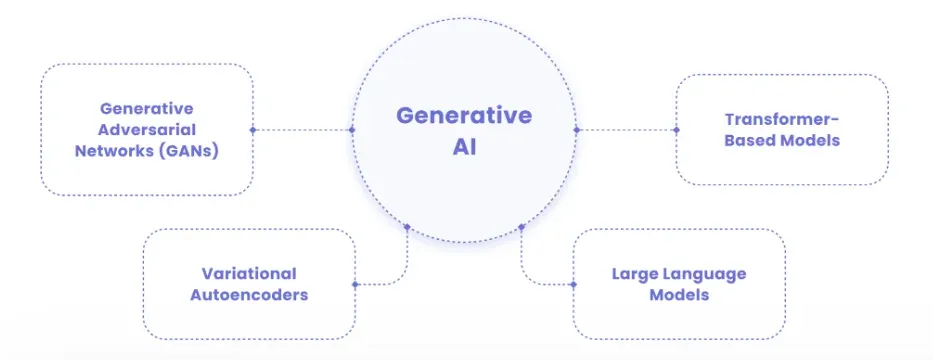
Attention Mechanisms: Generative AI models use attention mechanisms to focus on specific parts of the input data, aiding in the generation of more accurate and coherent outputs.
Decoding Strategies: These strategies help the models choose the most appropriate words or actions when generating content, ensuring coherence and relevance.
Types of Generative AI Models Commonly Used in Chatbot Development
Let's look at the different types of Generative AI models commonly used:
Recurrent Neural Networks (RNNs): RNNs are commonly used in chatbot development due to their ability to process sequences of data and generate responses one word at a time, making them suitable for conversational contexts.
Transformer Models: Transformer models, such as GPT-4 and BERT, have gained popularity in chatbot development for their ability to generate text with high accuracy and coherence, leading to more engaging interactions.
Autoencoders: Autoencoders are used to compress and decompress data, making them valuable in generating diverse responses in chatbot conversations based on the input received.
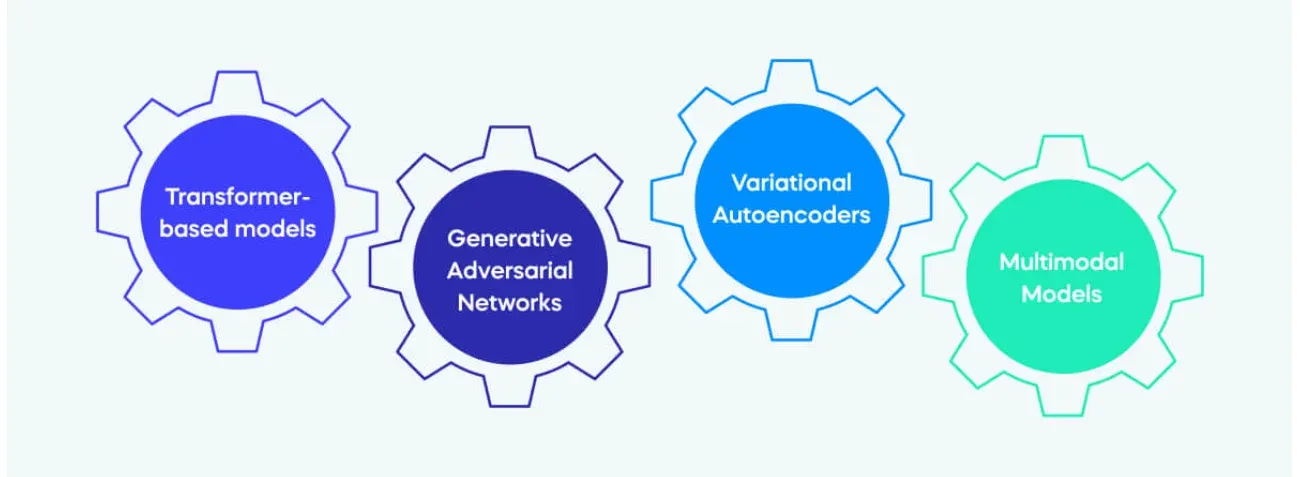
Role of Generative AI Models in AI Chatbots
Generative AI plays a crucial role in enhancing chatbot interactions by enabling chatbots to generate human-like responses to user queries. Here are some key ways in which generative AI models improve chatbot interactions:
Natural Language Understanding
Generative AI models, such as GPT-4 and BERT, are designed to understand and generate natural language responses. This allows chatbots to interpret user queries more accurately and provide relevant answers that mimic human conversation.
These models are trained on vast amounts of text data, enabling them to grasp the nuances of human language.
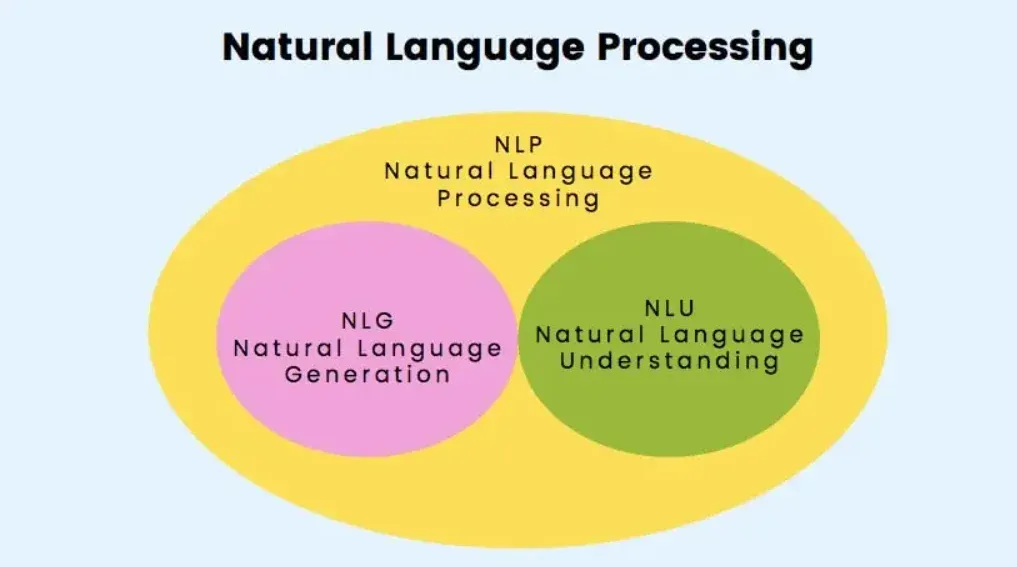
Contextual Awareness
Generative AI models can maintain context throughout a conversation, enabling chatbots to remember previous interactions with users.
This contextual awareness helps chatbots deliver more personalized and relevant responses, leading to a more engaging user experience.
By analyzing the context of the conversation, these models can better understand the flow of dialogue and tailor their answers accordingly. This results in more personalized and relevant responses that cater to the specific needs of the user.
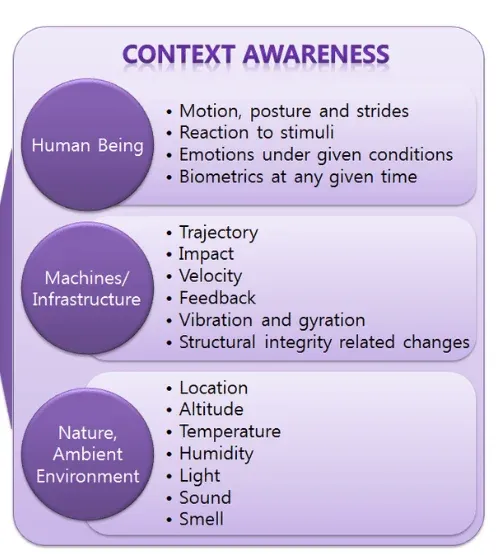
Improved Flexibility
generative AI models allow chatbots to handle a wide range of user queries, even those they may not have been explicitly trained on.
This flexibility enables chatbots to adapt to new situations and provide accurate responses in real time, enhancing the overall conversational flow with users. By leveraging language models that understand individual communication patterns, chatbots can adapt their responses to suit the user's unique style.
Benefits of Using generative AI models in Chatbot Development
Implementing generative AI models in chatbot development can bring a multitude of benefits, including.
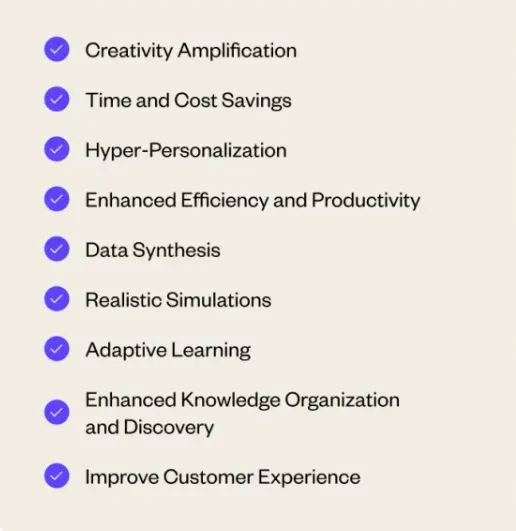
Enhanced User Experience
Generative AI models enable chatbots to provide more human-like and engaging interactions, leading to an improved user experience. Users are more likely to engage with chatbots that respond intelligently and naturally to their queries.
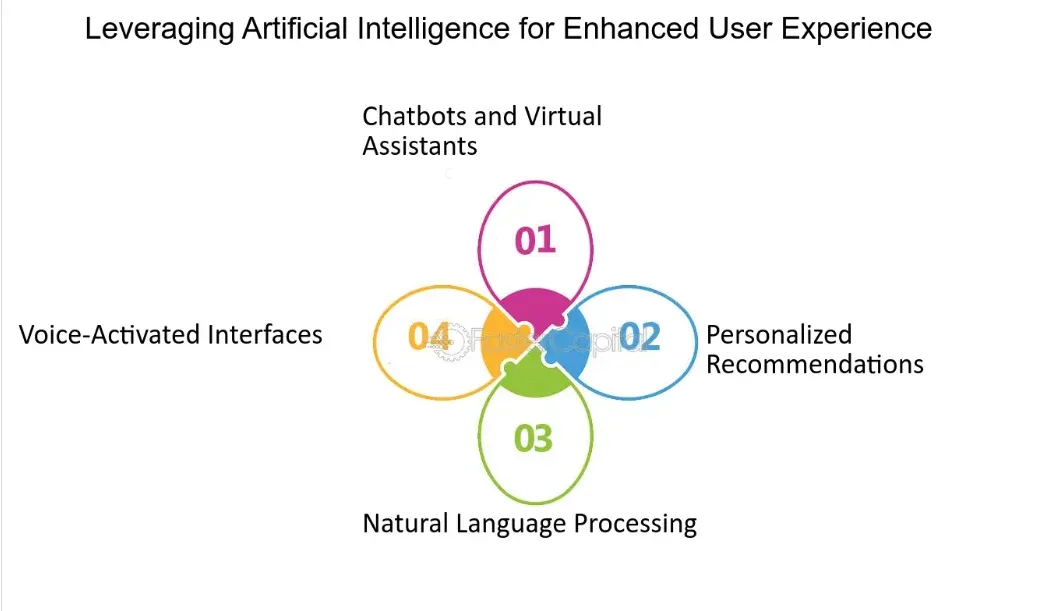
Increased Efficiency
Generative AI allows chatbots to handle a larger volume of queries simultaneously, reducing the need for human intervention in basic customer interactions.
This results in cost savings for businesses and faster response times for users.
Scalability
Generative AI models can be scaled easily to accommodate a growing user base without compromising the quality of interactions.
This scalability ensures that chatbots can handle increasing levels of user engagement effectively and efficiently.
Personalization
Generative AI enables chatbots to tailor responses to individual user preferences based on past interactions.
This personalized approach enhances user satisfaction and loyalty, leading to increased customer retention for businesses.
Steps to Implement Generative AI Models in Chatbots
Let's look at the various steps involved in using Generative AI Models in building AI chatbots :
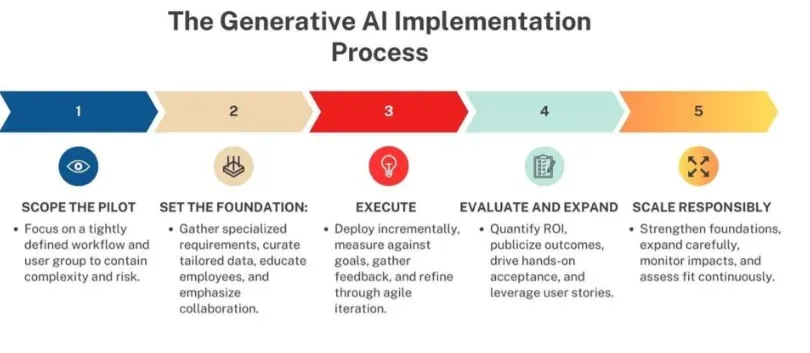
Data Collection and Preprocessing
To get started with implementing generative AI models in chatbots, the first step is data collection.
This involves gathering a large amount of text data that will be used to train the Generative AI model.
Once the data is collected, the next step is data preprocessing. This involves cleaning the data, removing any irrelevant information, and standardizing the format.
Training the Generative AI Models
After the data has been collected and preprocessed, it's time to train the generative AI models. Training involves feeding the data into the model and allowing it to learn the patterns and structure of the language.
The model will adjust its parameters based on the input data to generate more accurate and contextually relevant responses.
During the training phase, the model will go through multiple iterations, adjusting its parameters and fine-tuning its algorithms to improve its accuracy and effectiveness.
Suggested Reading:9 Benefits of Generative AI Apps You Must Know
Integrating the Model with Chatbot Framework
Once the Generative AI model has been trained, the next step is to integrate it with the chatbot framework. This involves setting up the infrastructure to allow the chatbot to communicate with the Generative AI models effectively.
Testing and Refining the Chatbot
After the integration is complete, it's time to test the chatbot. Testing involves evaluating the chatbot's performance, accuracy, and responsiveness.
It's essential to test the chatbot with various scenarios and inputs to ensure that it can handle a wide range of queries effectively.
During the testing phase, it's crucial to gather feedback from users and analyze the chatbot's performance metrics. Based on the feedback and data collected, adjustments and refinements can be made to improve the chatbot's performance and user experience.
Case Studies and Examples
Real-world examples of generative AI models powered Chatbots :
Generative AI Chatbot: A famous example is Google's ChatGPT which uses generative AI models to generate human-like responses in conversations. It can provide personalized recommendations based on user queries.
Language Models in Action: OpenAI's GPT-3 is another prominent chatbot example that uses generative AI techniques to generate text responses. It has been used in various applications like content creation, customer support, and more.
Generative AI for Personal Assistants: Virtual assistants like Siri and Alexa leverage generative AI models to understand user requests and provide relevant information. These chatbots continuously learn and improve their responses over time.
BotPenguin as a Generative AI Model for building Chatbots
BotPenguin is a versatile AI Chatbot for group chat software BotPenguin is a user-friendly, no-code chatbot for group chat software platforms. It allows you to create chatbots for various platforms, including Microsoft Teams, without any coding knowledge.
Key Features
Let’s check the features of BotPenguin as a Generative AI model for chatbot development:
Ready-made Templates for a quick and easy setup environment
Integration available with various CRMs: BotPenguin offers 60+ native integrations, including HubSpot, Salesforce, Agile, Simplybook, etc.
Unlimited Chatbot Creation options: Create as many chatbots as you need with no limit on usage
Voice Support System: Integrates with Twilio for voice capabilities. and assists in speech-to-text conversion
Benefits
Let us look at the pros of using BotPenguin as a Generative AI-powered chatbot builder:
No prior programming skills needed
huge range of valuable integrations: Works with over 60 tools for better usage
Supports multiple platforms: Use WhatsApp, Messenger, Telegram, and more.
Offers live chat and voice support: Engage customers in real-time and through voice.
Challenges and Solutions
Let's explore the various challenges involved in implementing Generative AI models in Chatbot development :
Common Challenges in Using Generative AI for Chatbots
Generative AI models can face various hurdles when employed in chatbots. Some of the common challenges include:
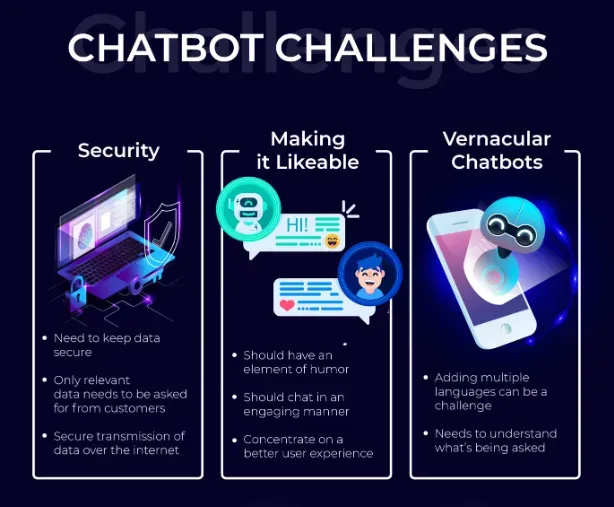
Lack of Data: Generative AI models require vast amounts of data to learn and generate responses effectively.
Overfitting: Overfitting occurs when the model memorizes training data instead of learning to generalize.
Bias: Generative AI models can inherit biases present in the training data, leading to discriminatory or prejudiced responses.
Context Understanding: Chatbots may struggle to comprehend the context of a conversation, leading to misunderstandings and inappropriate responses.
Suggested Reading:Beyond ChatGPT: 11 Other Generative AI Applications
Ethical Considerations
Ethical considerations are paramount when deploying generative AI chatbots. It's essential to ensure that chatbots adhere to ethical standards and respect user privacy. Some ethical considerations include:
Transparency: Users should be informed when interacting with a chatbot, disclosing that they are conversing with AI.
Data Privacy: Personal information shared with the chatbot must be handled securely and in compliance with data protection regulations.
Data Privacy and Security
Data privacy and security are critical aspects when using generative AI chatbots to protect user information and maintain trust. Solutions to address these concerns include:
Encryption: Implementing encryption techniques to safeguard data transmitted between users and the chatbot.
Anonymization: Removing personally identifiable information from conversations to protect user privacy.
Regular Audits: Conducting regular security audits to identify and address vulnerabilities in the chatbot system.
Solutions to Overcome These Challenges
To overcome the challenges associated with generative AI chatbots, organizations can implement the following solutions:
Data Augmentation: Augmenting the training data with additional examples to improve model performance and reduce overfitting.
Bias Detection and Mitigation: Utilizing bias detection tools to identify and mitigate biases in generative AI models to ensure fair responses.
Context-aware Responses: Enhancing the chatbot's ability to understand context through advanced natural language processing techniques.
Future of Generative AI in Chatbots
Let us see the future trends and predictions for Generative AI use in Chatbots :

Trends
Following are the various trends expected :
Continuous Learning Algorithms: Enabling chatbots to self-improve through iterative user interaction.
Multimodal Interfaces: Integration of NLP, computer vision, and speech recognition for richer interactions.
Hyper-Personalization: Leveraging advanced AI to deliver highly tailored user experiences.
Conclusion
In conclusion, the integration of generative AI models in building AI chatbots has revolutionized the conversational AI landscape.
By leveraging advanced technologies like Amazon Bedrock and prompt engineering, developers can create scalable and intelligent chatbots that can engage users in natural and meaningful conversations. Generative AI enables chatbots to generate text responses based on user input, enhancing the user experience and making interactions more personalized and engaging.
These advancements provide more natural, personalized, and efficient interactions by empowering AI chatbots to mimic human conversations. As the field of generative AI continues to evolve, we can expect even more sophisticated chatbot solutions that push the boundaries of what is possible in AI-driven conversations.
Embracing generative AI in chatbot development opens up a world of possibilities for creating dynamic and interactive user experiences that redefine the way we interact with technology.
Excited about the potential of AI-based chatbots? Don't wait—try BotPenguin now!
Frequently Asked Questions(FAQs)
What are generative AI models in chatbots?
Generative AI models, like GPT, are advanced algorithms that generate human-like text based on input. They help chatbots understand context, generate appropriate responses, and provide more natural, engaging interactions.
How do generative AI models improve chatbot conversations?
Generative AI models enhance chatbot conversations by understanding context, generating coherent responses, and adapting to user inputs. This results in more accurate, relevant, and engaging interactions, improving user satisfaction.
What benefits do generative AI models offer for chatbot development?
Generative AI models streamline chatbot development by reducing the need for extensive programming and pre-defined responses.
Can generative AI models handle complex user queries?
Yes, generative AI models can handle complex user queries by analyzing context, understanding nuances, and generating appropriate responses.
How do generative AI models ensure accurate responses?
Generative AI models ensure accurate responses by leveraging vast amounts of training data and advanced algorithms to understand context, intent, and nuances in user queries, resulting in more precise and relevant answers.
What role does training data play in generative AI models for chatbots?
Training data is crucial for generative AI models as it helps them learn patterns, context, and language nuances. High-quality, diverse training data improves the model's ability to generate accurate, context-aware responses.
